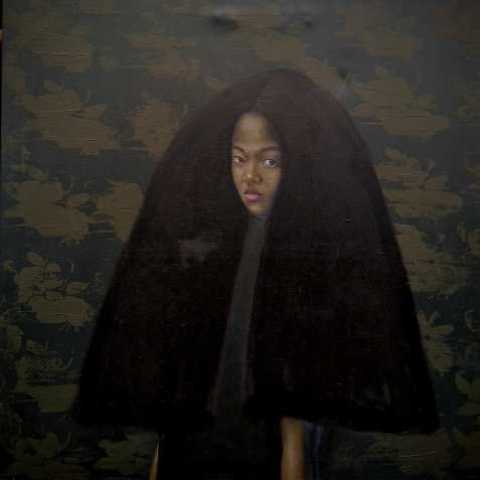Signature African Art
20 Davies Street
Mayfair
London
W1K 3DT
United Kingdom

Exhibition Dates: 12 March – 9 April 2020
Private View: 11 March, 6:30 – 8:30pm
Signature African Art opens its new London space on 11 March 2020 with a presentation of new paintings by the celebrated Nigerian artist, Oluwole Omofemi.
Entitled The Way We WereThe Were,, the exhibition will be arranged across the gallery’s basement and ground floors, and is formed of 12 large-scale portraits of women and children, as well as a number of smaller works specially commissioned by the gallery.
In the words of the artist, each is a celebration of Afrocentric pride, as well as reflection on the postcolonial era. The British artist Claudette Johnson has talked of the ‘fiction of blackness’ that colo
nialism left in its wake and of the need for people to assert their identity through their own stories. Omofemi embraces this idea, focussing on the importance of hair amongst black communities.
While it has always been a signifier of status and identity, Omofemi looks back to recent history, to The Civil Rights Movement of the 1960s and ‘70s, and the natural hair movement. This encouraged black people to eschew European styles for afros, a move that was championed by popular icons such as Jimi Hendrix and Diana Ross.
In Omofemi’s work, hair stands as a metaphor for freedom — indeed, sometimes it literally spills over the edge of the canvas, as with Root II; while in others, such as Omonalisa, it dominates the composition, becoming larger than the subject itself. Rendered in oil and acrylic, these paintings sometimes have simple primary coloured backgrounds, which lend them a vivid Pop Art sensibility; in others, a darker mood is created, referencing the works of the Old Masters.
Located in Davies Street, Mayfair, Signature African Art was founded by Rahman Akar. Of its first show, he says: ‘We are delighted to be opening a space in London, and thrilled that Oluwole Omofemi, one of Nigeria’s most compelling young artists, is our first show. In addition to his mastery of composition, his works are at once both celebratory and deeply thought-provoking.’
